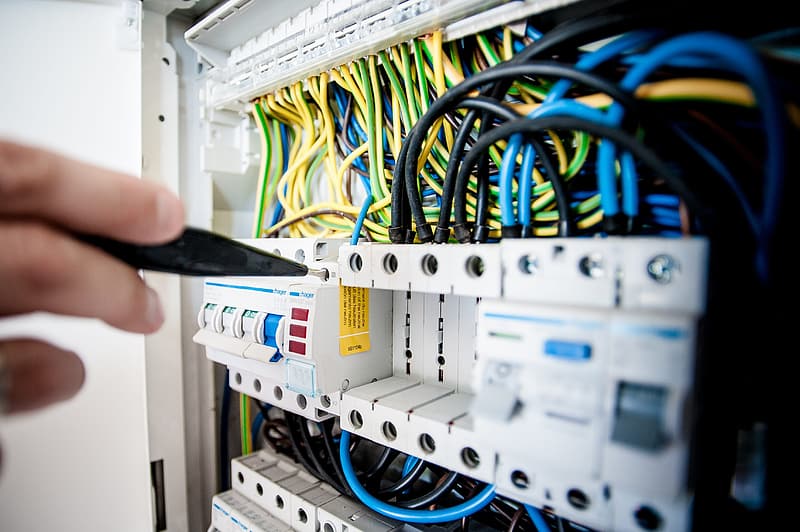
The distribution of electrical power is provided by cables which run from the distribution board to the electrical outlets, lighting points, the water heater, etc. The power is distributed by cables which consist of several electrical wires grouped together within the same protective sheath. This post provides you with all the information you need to know about cables, sheaths, and wires.
Contents:
– Electric current: the essential notions
– Electric cables and wires
– The colour of the wires
– What to do if you are not sure of the colour of the wires?
– Electrical sheaths
– Electric cables and wires
– The colour of the wires
– What to do if you are not sure of the colour of the wires?
– Electrical sheaths
Electric current: the essential notions
Electricity is a complex energy. In your electrical installation, there are two types of current with different uses: high and low current.
High current supplies your electrical appliances and lighting
Weak current, on the other hand, carries information in the form of weak electrical impulses. It is used to operate your television, telephony, Internet, alarm… These two currents must be separated by ducts. This post helps you to better understand how an electrical circuit works.
Electric cables and wires
The distribution of electric power is ensured by the cables. This post gives you the basics you need to know about the electrical wiring of an installation.
Cables differ in cross-section and colour. There are three types of cross-sections. The thicker the cable, the more current it allows to pass through.
To differentiate them, electrical cables have colours. This colour code is standardized so that you or any electrician can troubleshoot or modify the installation.
Good to know: think about cable management to hide and protect your electrical cables.
Before handling an electrical installation, it is imperative to know the colour code associated with the various electrical wires. It is the NF C 15-100 which aims to define all the rules concerning electricity for the domestic habitat, and thus the colour standards for electrical wires.
The colour of electrical wires
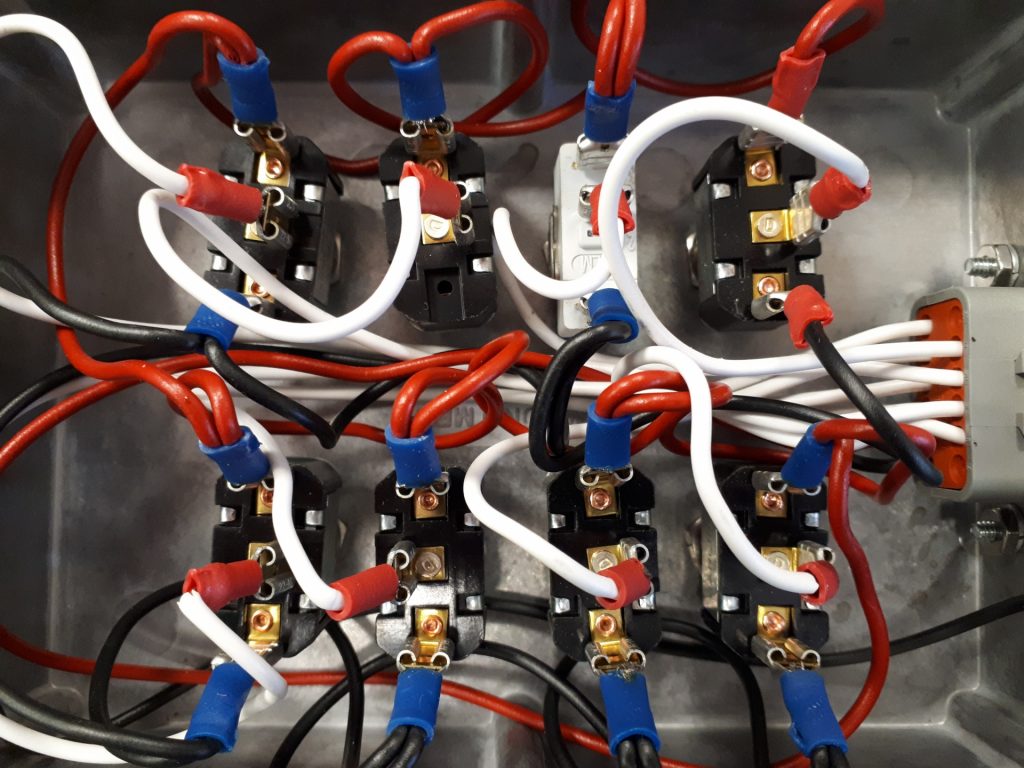
Mandatory colours
Since 1970, the NF C 15-100 standard has defined the compulsory colours for certain types of conductors: the protective conductor (earth) and the neutral conductor.
These are the only two compulsory colours for the domestic and tertiary sectors.
The double colour green and yellow will be reserved exclusively for the earth conductor and the protective conductor in the cables.
The light blue colour is reserved exclusively for the neutral conductor.
Colour usage
For other conductors such as phase, lamp return, shuttles and pushers, there is no obligation mentioned in the standard, but the usage is as follows:
– red colour: for the phase conductor;
– colour orange: for the lamp return (the phase wire after the switch is switched off);
– purple: for shuttles;
– black or white: for the push-buttons.
Each company or craftsman will use its own colour code, but it will generally resemble the one described above.
Colours before 1970
Attention, for older installations, the colours are different:
– for the phase: a green or a yellow wire;
– for the neutral conductor: grey or white;
– for the earth conductor: red or black.
Moreover, before 1969, the earth conductor was not compulsory or even non-existent.
What to do if you are not sure of the colour of the wires?
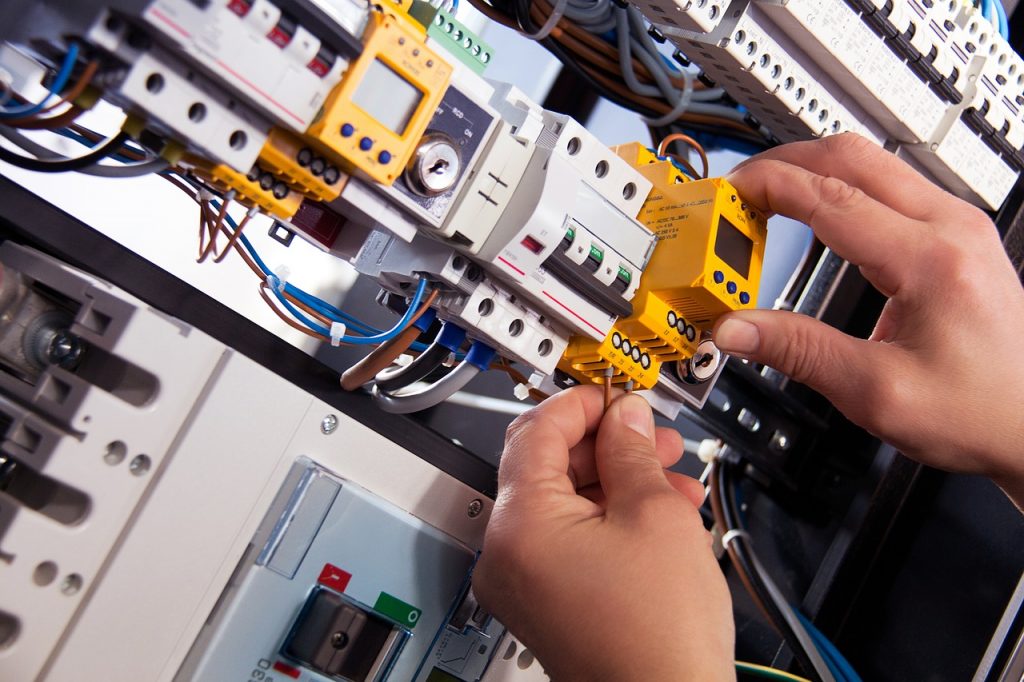
There is a technique to know, even in the absence of certain colours, which are the phase, earth and neutral wires on a socket circuit. Using a multimeter, perform the following checks:
First, find a direct ground connection to which you can connect a long wire for testing.
Turn off your general circuit breaker to be sure to isolate the circuit to be tested, but especially to be sure to disconnect the neutral. More than 35 years ago, the neutral conductors in a panel were common and grouped together on the same strip and, therefore, not cut when the circuit protection was opened.
Set your multimeter to the “Ohms” or “continuity test” position and connect one of the cords to the wire that is grounded. Using the other cord, test all three wires in the circuit: normally, only one should cause your multi-meter to react. This wire will be the ground, and you will need to tape it with green/yellow tape.
Let’s now look for the phase and neutral, which will now be live: so be careful. There is danger. Your multi-meter, always connected to earth, must be set to a higher rating than 230 V AC. On one of the wires, you should have 230 V: this will be the phase; on the other wire, 0 V: will be neutral.
Ring the phase in red and the neutral in blue.
Warning: if you have any doubts, it is advisable to call a professional who will be better able to test your circuits.
Electrical sheaths
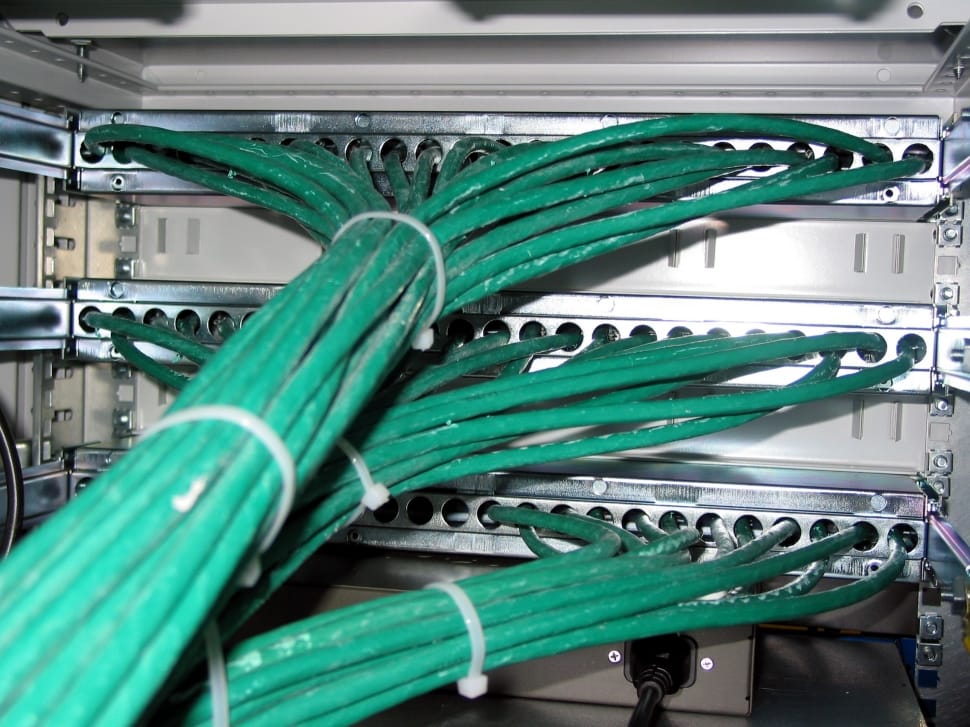
To ensure the electrical safety of your installation, the electrical wiring must be protected by a sheath. The electrical sheath is the most commonly used to protect electrical wires. It is a corrugated, insulated conduit used to group different wires together and embed them in a wall.
Presented in the form of a crown, it can be cut to the desired size. A wire puller makes it easier to pass electrical wires through.
This type of sheath exists in different diameters: 16 mm, 20 mm, 32 mm, etc.
Good to know: always provide an electrical sheath that is wider than you need it to be immediately so that you can later allow the passage of the wires needed to create a new circuit.
Housing Technical Sheath
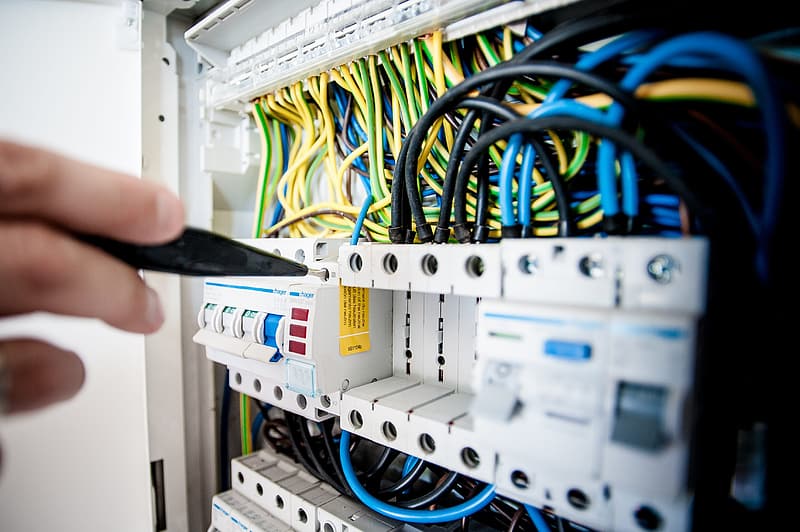
The housing technical duct is mandatory in all new housing. It gathers in a single location the arrivals of strong currents (electricity) and weak currents (communication).
This electrical duct must be located indoors or in the garage, or in an easily accessible annex.
It must contain various elements:
– control panel;
– main distribution board;
– communication box;
– two 16 A socket outlets;
– communication applications (television, etc.).
and possibly:
– anti-intrusion protection;
– home automation.
The housing duct can be surface, flush or semi-recessed.
If you are looking for complete residential electrical services, you can get in touch with Eccles Electrical Contractors. They are a team of licensed electricians providing general electrical services to residential, commercial, and industrial clients throughout North Melbourne, Flemington & Kensington VIC, thereby ensuring all work is carried out to the highest standards.
